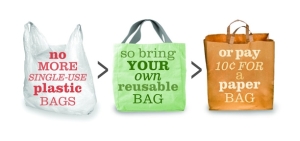A research team from Virginia Tech led by Y.H. Percival Zhang just developed a battery that runs on natural sugar that could replace conventional batteries within three years.
Most gadgets today run on lithium-ion batteries, which are costly. Lithium is a limited resource with the majority of the world’s supply found in Bolivia, China, Chile, Argentina, and Australia. Sugars, on the other hand, are abundant in supply and safe to use. The battery technology could serve as the next generation of green power sources.
The sugar battery is cheap, refillable, and biodegradable, and it could be used to power cell phones, tablets, video games and other electronic  gadgets in the future. “Sugar is a perfect energy storage compound in nature,” Zhang said. “So it’s only logical that we try to harness this natural power in an environmentally friendly way to produce a battery.”
gadgets in the future. “Sugar is a perfect energy storage compound in nature,” Zhang said. “So it’s only logical that we try to harness this natural power in an environmentally friendly way to produce a battery.”
Researchers have used sugar to power batteries before, but they were not able to store that much energy. Zhang claims his prototype has an energy density of a higher order of magnitude than others, which allows it to run longer before needing to be refueled.
The impact of disposable batteries on the environment has been well documented – billions are thrown away in the US alone every year. According to the Environmental Protection Agency (EPA), improperly disposed batteries pose a risk to both human health and the environment, but Zhang says his sugar replacement could stop hundreds of thousands of tons of batteries from ending up in landfills.
The sugar battery combines fuel – in this case maltodextrin, a polysaccharide made from partial hydrolysis of starch – with air to generate electricity, and water is its main byproduct. “We are releasing all electron charges stored in the sugar solution slowly step-by-step by using an enzyme cascade,” Zhang said.
However unlike traditional batteries, the fuel sugar solution is neither explosive nor flammable and it has a higher energy storage density. The enzymes and fuels used to build the device are also biodegradable, and it can also be refilled, much like a printer cartridge.
Even though the sugar battery stores a high amount of energy for its mass, the maximum amount of power it can put out is still lower than that of lithium-ions, thus limiting its potential applications to portable devices (you couldn’t use a sugar battery to run vehicles, for instance).
The team says that the sugar fuel cell could be ready to integrate into our electronics in three years and will eventually be at least one-tenth the cost of lithium-ion batteries.

Another great Green article from Green Halo
Track your recycling at www.greenhalosystems.com
Follow Green Halo on Twitter at http://twitter.com/greenhalousa













